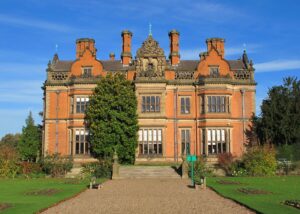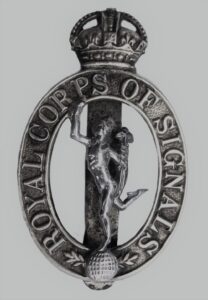Beaumanor Hall ‘Y’ Listeners
9 May 2020
In celebration of VE day, Loughborough Library Local Studies Group reveal the wartime secrets of Beaumanor Hall and the ‘Y’ Listeners code ‘Ultra’.
‘Ultra’ was one of the best kept secrets of WWII.
In October 1941 Ministry of Defence Officials quietly requisitioned Beaumanor Hall in Woodhouse Eaves, Leicestershire, where they set up a top-secret Station ‘Y’, a facility to intercept and monitor enemy radio transmissions. It was staffed by male civilians and female military personnel.
Many people are unaware of the remarkable work carried out so close to Loughborough. The people who worked there during the war were subject to the Official Secrets Act. Their actions were calculated to have shortened the war by two years. It was almost 50 years after the war that the ‘Y’ Listeners came to the public notice, many passed away carrying their secret with them, their families unaware of the remarkable achievements of their loved one.
There have been numerous books about Bletchley Park and the work carried out there, but apart from Joan Nicholls’ book ‘England Needs You. The Story of Beaumanor Y Station in World War Two’ published in 2000, very little has been written about the local interceptors at Beaumanor without whom Bletchley could not have functioned. By the end of the war there were over 1200 ATS female operators and 300 male civilians working at Beaumanor. All were billeted close by.
Security was very tight, with disguised and camouflages buildings, military police with guard dogs, plus their own heavily armed independent Home Guard Unit that was there solely to defend the Hall and its occupants. The most important items of equipment at Beaumanor were the radio sets. They were never switched off and operators worked in shifts.
Experienced operators could often recognise individuals by their ‘fist’ – the way they sent messages. It was as good as a signature at times. When a message was intercepted it was written on a special form, printed in red noting the time, frequency and the operator’s number. A copy was transmitted to Bletchley Park and the actual written form sent that night by despatch rider. Operators had to concentrate very hard and often there would be no interceptions for hours. Boredom was a problem as well as cold as there was no heating in the huts where they worked.
The Enigma machine was used by the Germans to send encrypted messages, enigma meaning mystery. It looked like a typewriter with a keyboard at the front and rotor wheels and lamps at the back. The encoding was very simple, but the strength of the enigma machine lay in the number of different ways it could be initially configured. Without a German code book it was nearly impossible to decode. That was the task of the cryptographers at Bletchley Park. At Beaumanor their job was to listen to messages and write down on paper, as accurately as possible, what they heard.
by John Gibson, Loughborough Library Local Studies Group
John is sharing daily ‘Secrets of Wartime Beaumanor’ over the VE Commemoration weekend on the Remember Loughborough Facebook Page. Find them here.

